What You Need to Know About Estimating the Cost of Building a Deck
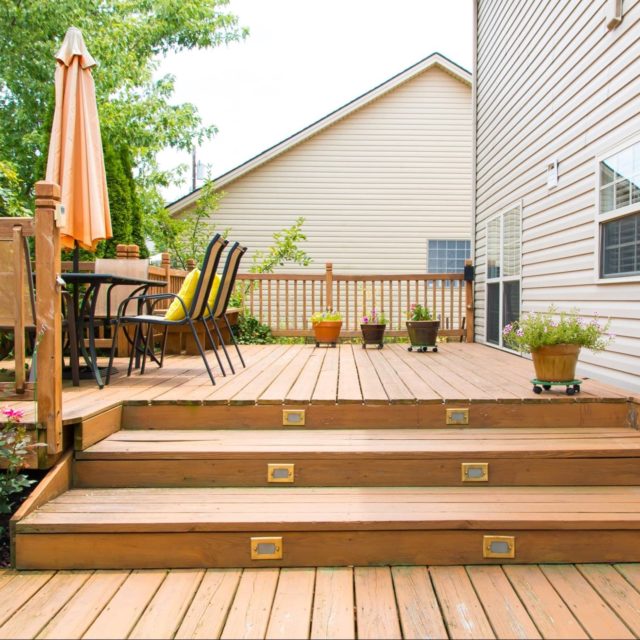
- Written by: jlbmdev

From barbecues to fire pits and family gatherings, a deck has the power to change the landscape of your backyard and create a space you never want to leave. If you feel it’s time to add some flare to your property and extend your living area, you may be wondering about estimating the cost of building a deck. In this blog, we’ll explore everything from the cost to build a deck to different backyard deck designs and even how to maximize your ROI when adding a deck to your property.
The national average cost to build a deck is around $7,500. However, prices will vary depending on factors such as materials, design style, and foundation. For instance, building a deck under 200 square feet can average between $3,000 all the way to $14,000, depending on the style and materials you choose.
The cost will increase if you’re looking for a more ornate or intricate design, whereas a pressure-treated or chemical-treated deck with a simple layout can help keep costs down. If you’re looking to build a second-story deck, overall costs will increase by 30-60 percent.
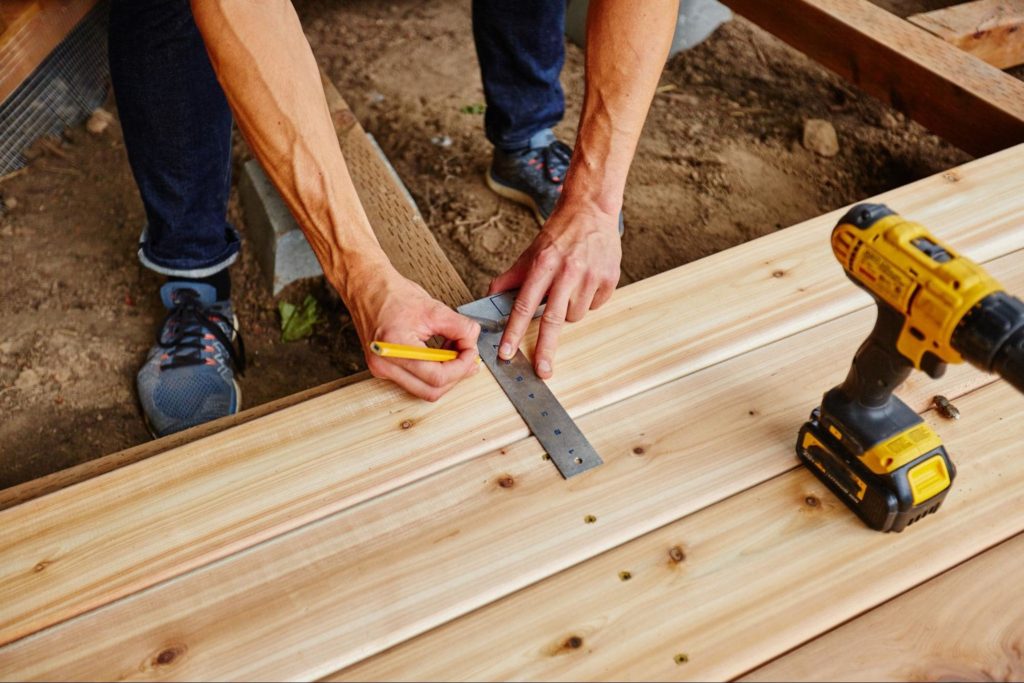
Understanding the different options available to you will help you weigh your options and determine what type of deck is actually right for you. We’ll explore the major factors that affect price below to help you find the right fit for your backyard and budget.
The three most common choices of materials for a deck are wood, composite, and plastic. On average, the cost of decking materials ranges between $20 to $45 per square foot. Pressure-treated woods (which are the easiest on the wallet) typically range from $15 to $20 per square foot, with plastic and composite materials around $30 to $40 per square foot.
Size is an obvious factor when estimating the cost of building a deck, since the larger the deck the more building materials required. When planning for a new deck, you want to keep in mind how much room it will take up in your backyard.
A good rule of thumb is to build a deck no bigger than the largest room in your house. This will help your deck exceed no more than 20% of your home’s square footage, so as not to overwhelm the look of your home visually. When thinking about size, it can also help to consider why you want the deck in the first place.
The three most popular uses for a deck include:
If you have a small family and would primarily prefer to use your deck to sip some coffee and relax, you likely won’t want to opt for the same size as someone who wants to use it for backyard barbecues, pool parties, and outdoor dining.
Built-in benches or grills and elaborate railings will affect the price of a deck, as it requires expert installation and specialty contractors. For instance, a wraparound deck could cost an average of 50 to 100 percent more than a smaller-sized, traditional deck.
Another factor is whether or not your deck will require additional support structures with concrete footings. A raised deck will require building the deck over concrete and using additional beams for support, whereas small decks may only need concrete blocks. The average cost of a decking block typically ranges from $50 to $74, and the average cost of a poured concrete footer is $200 to $400.
This question is somewhat dependent upon personal preference. However, if you’re looking to build a wood deck, pressure-treated lumber, which is typically cited as the best wood to build a deck, has chemicals that contain insecticides and anti-rot properties.
Not everyone likes the natural hue of pressure-treated wood, but you can always choose to stain your deck to make it more unique to you. If you’re looking to get a long life out of your deck while still being budget-conscious, then this is a great material to choose.
Other types of decking materials include:
The estimated cost of building a deck is also dependent upon the type of deck design you want. Since your deck will either (1) be with you for years to come or (2) affect your home’s selling price when you want to move, it’s important to consider your backyard patio and deck design ideas carefully.
Perhaps the most popular choice among homeowners, the platform style is a low-level deck attached to the house. This style doesn’t usually require a complex foundation or construction, as it’s typically level with the ground. The average cost is around $10 to $20 per square foot, making it a great, inexpensive option.
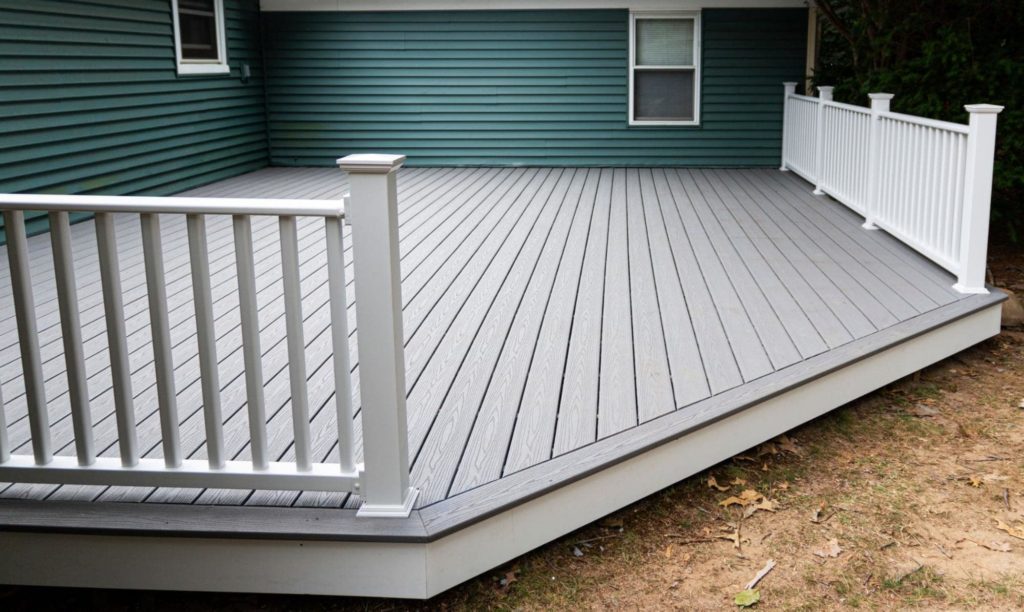
If you’re wondering how to build a floating deck (also known as a detached deck) and whether it’s worth it for you not, the average build is around $20 to $60 per square foot. One of the major benefits of this style is that it can be built anywhere on a property and doesn’t need to attach to an existing structure. Detached decks are appealing to homeowners who don’t have space available next to their homes.
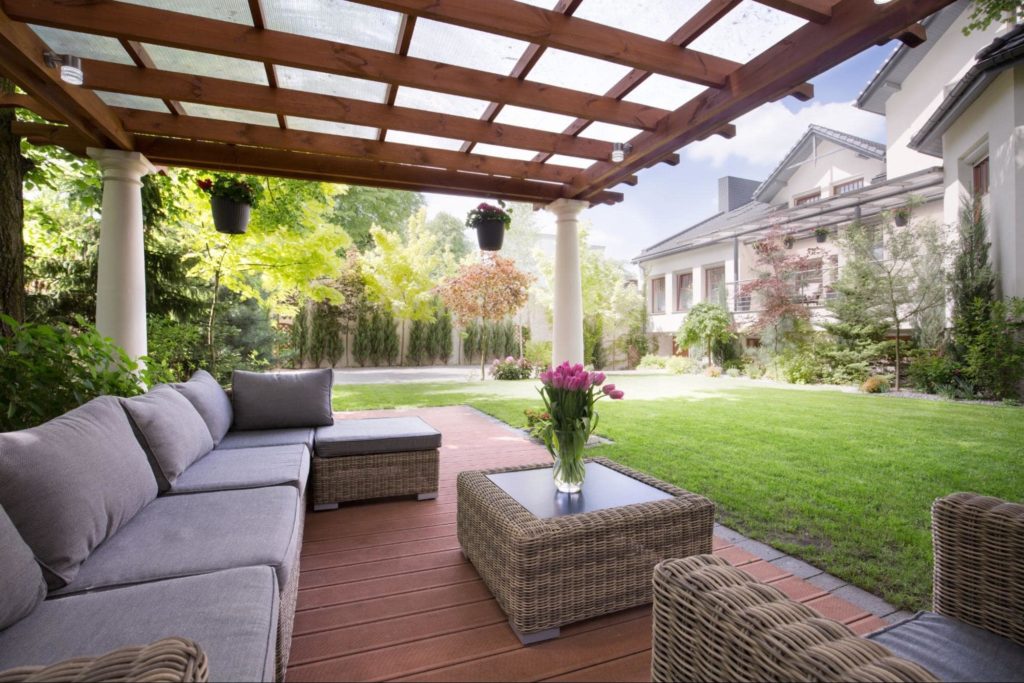
Built adjacent to the house, a raised deck is designed to level out uneven ground. Raised decks may also include multiple levels, which means additional stairs and sturdy railings. This style isn’t typically the go-to for homeowners on a budget, but it’s still a popular choice, as the split layout provides ample space and a nice atmosphere for larger gatherings.
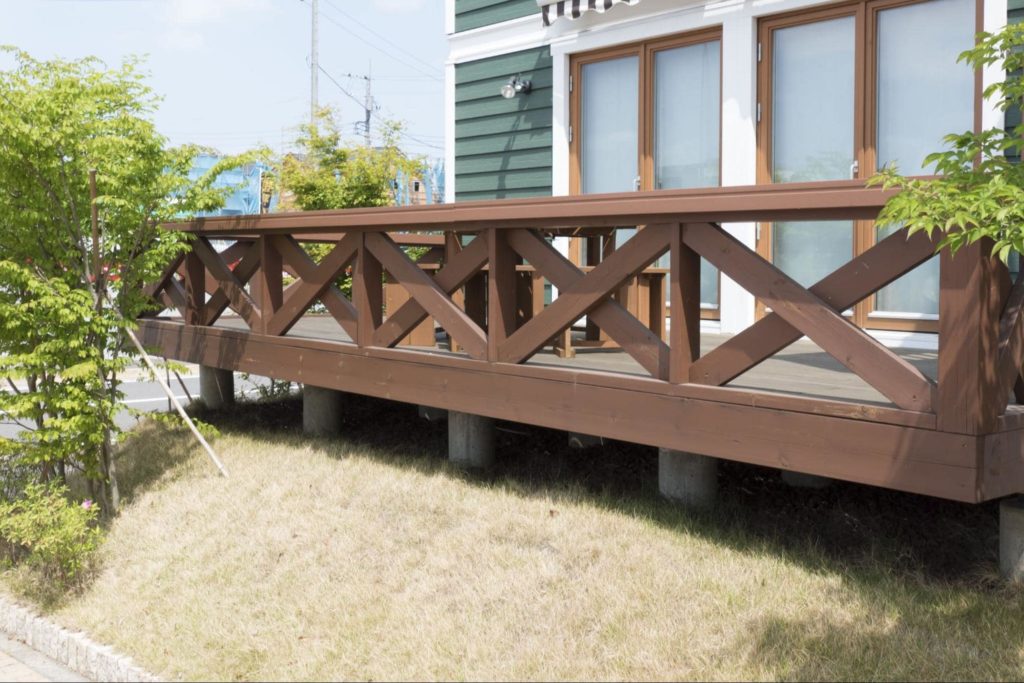
If your backyard borders a steep hill, a two-story deck can be a great choice, Since the added complexity of full sets of stairs, railings, and foundation requirements means more installation work, the average cost is around $40 to $50 per square foot. When considering a two-story build, it’s important to keep in mind the necessity of understanding building codes for deck railings and how to build deck stairs. More often than not, multilevel decks are jobs for contractors and not something to be taken on as a DIY project.
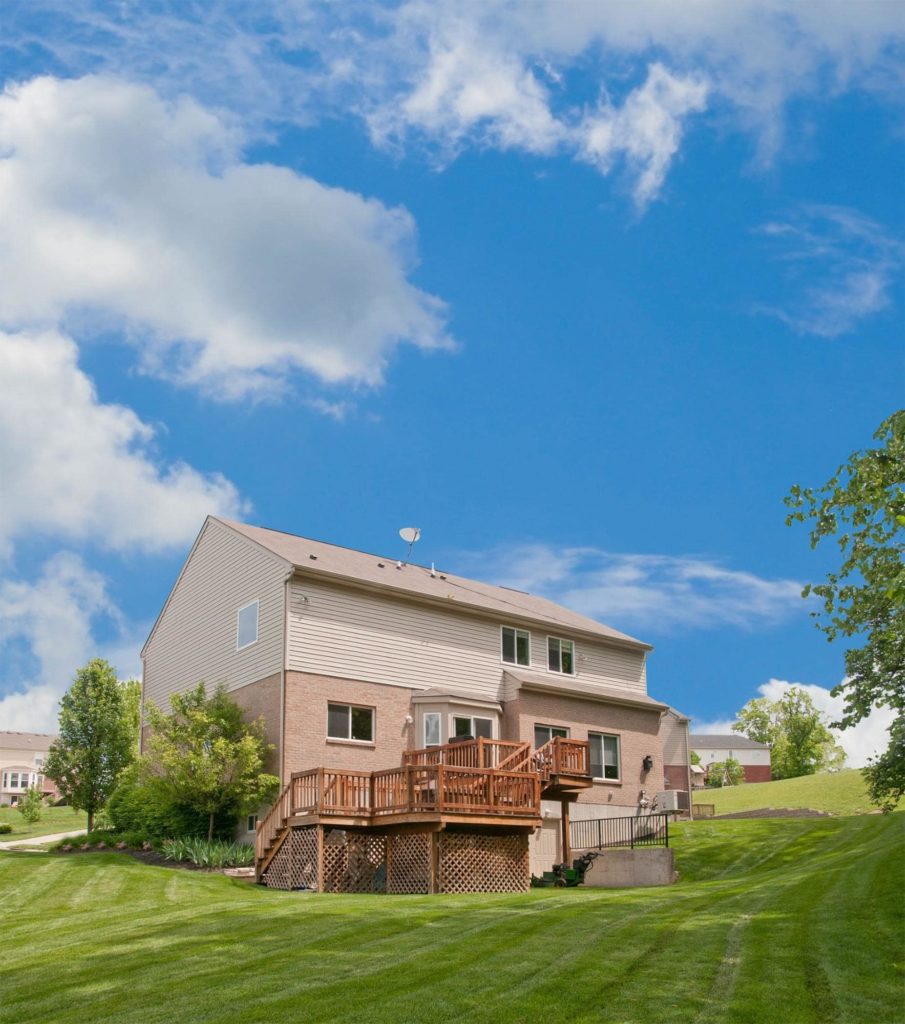
Covered decks may be partially enclosed or fully covered. The cost to enclose a deck ranges between $6,000 to $26,000, depending on size and materials. Some homeowners may prefer to shade themselves with a pergola, if space allows. However, for decks where the layout is not conducive to outdoor structures, a covered deck can be a great choice.
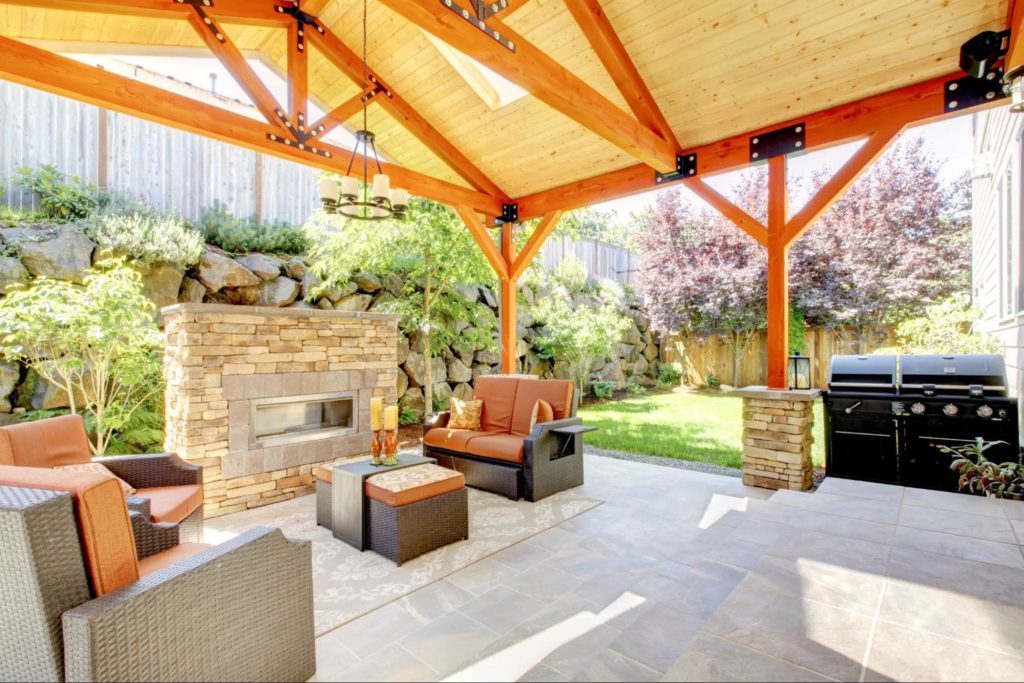
On the list of things to consider when estimating the cost of building a deck is choosing a DIY approach or partnering with a contractor. For small and simple decks, a DIY approach may work just fine.
However, if you’re wondering about the regulations and building codes of how to build a deck around a pool or even how to build a deck on the ground so it won’t move, partnering with a trusted contractor can remove stress and ensure the longevity of your build.
As many homeowners could tell you, building a deck is one of the easiest projects to mess up. Understanding concepts like deck building codes, deck building plans, and even how to build a deck frame aren’t concepts people often have at hand.
The last thing you want to do is spend all the money you have budgeted on purchasing the proper materials and tools just to end up with warping wooden boards and a loose foundation.
Partnering with a licensed contractor can get you better access to pricing on materials and help ensure quality design and installation. Another important factor to consider is that an experienced contractor will be familiar with regional building codes.
While the best advantage of building a deck is the ability to provide a space for your friends and family to come together, it also has some monetary perks. In a recent Cost vs. Value report by Remodeling Magazine, a homeowner can recoup about 68% of the cost of building a new composite deck when the time comes to sell.
The quality of your deck build is an important factor to keep in mind when thinking about maximizing ROI. While a DIY approach may appeal to you for one reason or another now, a poorly constructed deck (that’s also an eyesore) can actually hurt the future resale value of your home.